May Guinness (1863-1955) Portrait of a Woman Oil on canvas, 84 x 61cm (33 x 24'') Exhibited: Dublin, IMMA, 'Analysing Cubism', February/May 2013; Cork, Crawford Gallery, Cork, June/September 2013; and Banbridge, F.E. McWilliam Gallery, September/November 2013. Literature: 'Analysing Cubism 2013', full page illustration, p.31. This undated work is likely to have been painted after 1922 when Guinness had thoroughly familiarised herself with modern French painting. She studied with the cubist Andre Lhote from 1922 to 1925 but had already spent many years in France. Born in 1863, Guinness first visited Paris before 1910 where she studied art with the Dutch artist Kees Van Dongen an expressionist painter. She continued to visit the city regularly and to develop her understanding of modernism right into her sixties and beyond. This portrait depicts a young woman wearing a bright strikingly modern costume of coloured stripes with a pink band of material across her head. Her hands are held dutifully in her lap while her detached expression suggests the ennui associated with posing for long periods. Although called a portrait the work can be considered in terms of its abstract design and use of form. Guinness was strongly influenced by French expressionism or Fauvism and especially by the work of Henri Matisse and Van Dongen. This is evident in this painting. The thinly applied paint with its flat texture suggests the technique of fresco painting. It is a style that Matisse used in a number of his paintings most notably in his Portrait of André Derain (1905, Tate) which was shown in the inaugural Fauve exhibition at the Salon dAutomne in 1905. Guinness painted murals at her family home, Tibradden House in the 1920s (now destroyed) in which she may have deployed a similar effect. The strong pinks and oranges of the shadows cast on the face in Portrait of A Woman are typical of Fauvist art which exaggerates the effects of light and shade to create highly decorative and expressive paintings. Guinness was well aware of this idea. Her one-woman exhibition in London in 1922 was called Decorative Paintings and Drawings. In this painting she builds up the composition in blocks of strong colour to create a consciously modern work of art that exudes the artists energy and freshness of vision. Dr Roisin Kennedy May Guinness (1863-1955) Portrait of a Woman Oil on canvas, 84 x 61cm (33 x 24'') Exhibited: Dublin, IMMA, 'Analysing Cubism', February/May 2013; Cork, Crawford Gallery, Cork, June/September 2013; and Banbridge, F.E. McWilliam Gallery, September/November 2013. Literature: 'Analysing Cubism 2013', full page illustration, p.31. This undated work is likely to have been painted after 1922 when Guinness had thoroughly familiarised herself with modern French painting. She studied with the cubist Andre Lhote from 1922 to 1925 but had already spent many years in France. Born in 1863, Guinness first visited Paris before 1910 where she studied art with the Dutch artist Kees Van Dongen an expressionist painter. She continued to visit the city regularly and to develop her understanding of modernism right into her sixties and beyond. This portrait depicts a young woman wearing a bright strikingly modern costume of coloured stripes with a pink band of material across her head. Her hands are held dutifully in her lap while her detached expression suggests the ennui associated with posing for long periods. Although called a portrait the work can be considered in terms of its abstract design and use of form. Guinness was strongly influenced by French expressionism or Fauvism and especially by the work of Henri Matisse and Van Dongen. This is evident in this painting. The thinly applied paint with its flat texture suggests the technique of fresco painting. It is a style that Matisse used in a number of his paintings most notably in his Portrait of André Derain (1905, Tate) which was shown in the inaugural Fauve exhibition at the Salon dAutomne in 1905.
May Guinness (1863-1955) Portrait of a Woman Oil on canvas, 84 x 61cm (33 x 24'') Exhibited: Dublin, IMMA, 'Analysing Cubism', February/May 2013; Cork, Crawford Gallery, Cork, June/September 2013; and Banbridge, F.E. McWilliam Gallery, September/November 2013. Literature: 'Analysing Cubism 2013', full page illustration, p.31. This undated work is likely to have been painted after 1922 when Guinness had thoroughly familiarised herself with modern French painting. She studied with the cubist Andre Lhote from 1922 to 1925 but had already spent many years in France. Born in 1863, Guinness first visited Paris before 1910 where she studied art with the Dutch artist Kees Van Dongen an expressionist painter. She continued to visit the city regularly and to develop her understanding of modernism right into her sixties and beyond. This portrait depicts a young woman wearing a bright strikingly modern costume of coloured stripes with a pink band of material across her head. Her hands are held dutifully in her lap while her detached expression suggests the ennui associated with posing for long periods. Although called a portrait the work can be considered in terms of its abstract design and use of form. Guinness was strongly influenced by French expressionism or Fauvism and especially by the work of Henri Matisse and Van Dongen. This is evident in this painting. The thinly applied paint with its flat texture suggests the technique of fresco painting. It is a style that Matisse used in a number of his paintings most notably in his Portrait of André Derain (1905, Tate) which was shown in the inaugural Fauve exhibition at the Salon dAutomne in 1905. Guinness painted murals at her family home, Tibradden House in the 1920s (now destroyed) in which she may have deployed a similar effect. The strong pinks and oranges of the shadows cast on the face in Portrait of A Woman are typical of Fauvist art which exaggerates the effects of light and shade to create highly decorative and expressive paintings. Guinness was well aware of this idea. Her one-woman exhibition in London in 1922 was called Decorative Paintings and Drawings. In this painting she builds up the composition in blocks of strong colour to create a consciously modern work of art that exudes the artists energy and freshness of vision. Dr Roisin Kennedy May Guinness (1863-1955) Portrait of a Woman Oil on canvas, 84 x 61cm (33 x 24'') Exhibited: Dublin, IMMA, 'Analysing Cubism', February/May 2013; Cork, Crawford Gallery, Cork, June/September 2013; and Banbridge, F.E. McWilliam Gallery, September/November 2013. Literature: 'Analysing Cubism 2013', full page illustration, p.31. This undated work is likely to have been painted after 1922 when Guinness had thoroughly familiarised herself with modern French painting. She studied with the cubist Andre Lhote from 1922 to 1925 but had already spent many years in France. Born in 1863, Guinness first visited Paris before 1910 where she studied art with the Dutch artist Kees Van Dongen an expressionist painter. She continued to visit the city regularly and to develop her understanding of modernism right into her sixties and beyond. This portrait depicts a young woman wearing a bright strikingly modern costume of coloured stripes with a pink band of material across her head. Her hands are held dutifully in her lap while her detached expression suggests the ennui associated with posing for long periods. Although called a portrait the work can be considered in terms of its abstract design and use of form. Guinness was strongly influenced by French expressionism or Fauvism and especially by the work of Henri Matisse and Van Dongen. This is evident in this painting. The thinly applied paint with its flat texture suggests the technique of fresco painting. It is a style that Matisse used in a number of his paintings most notably in his Portrait of André Derain (1905, Tate) which was shown in the inaugural Fauve exhibition at the Salon dAutomne in 1905.
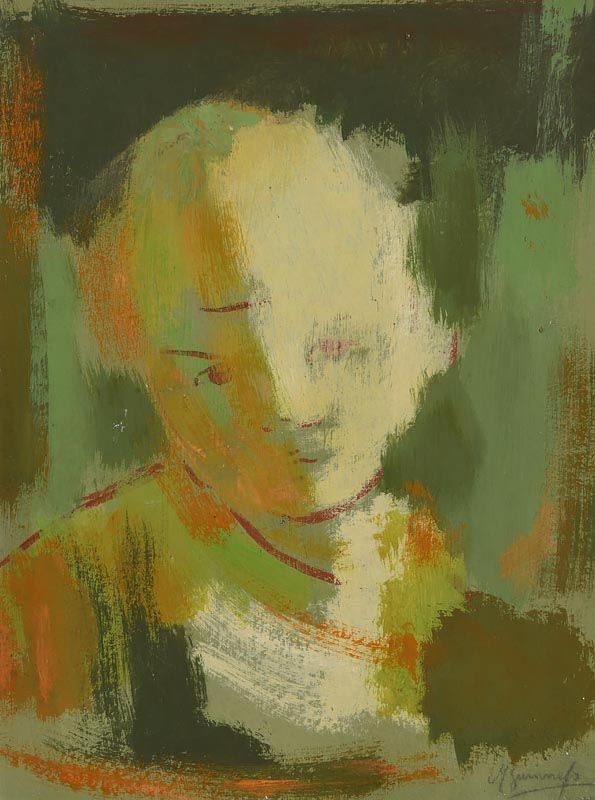
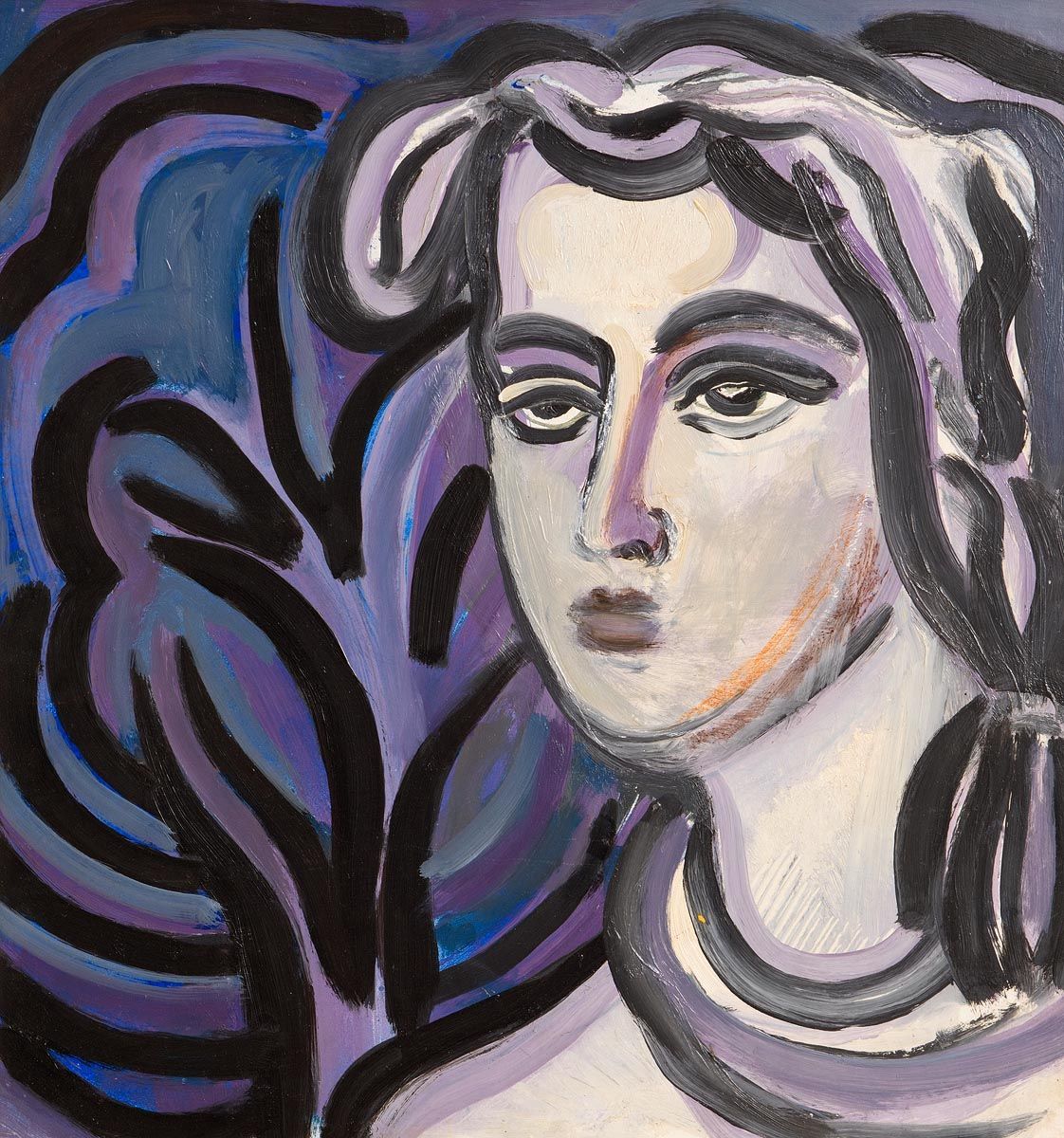
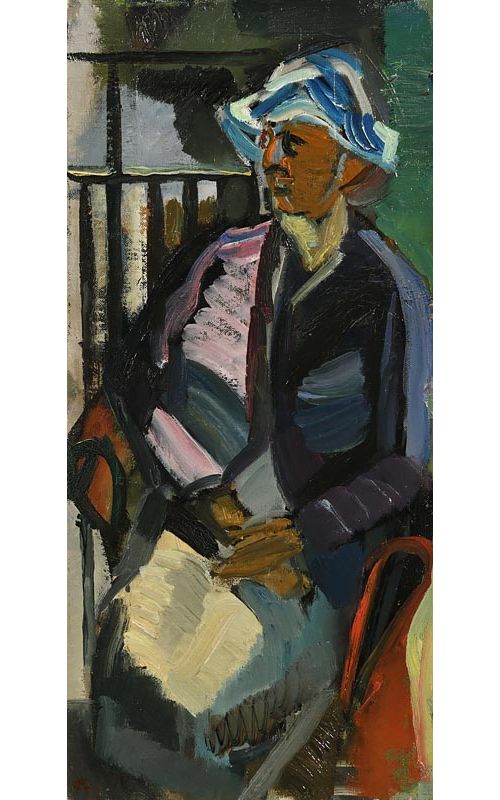
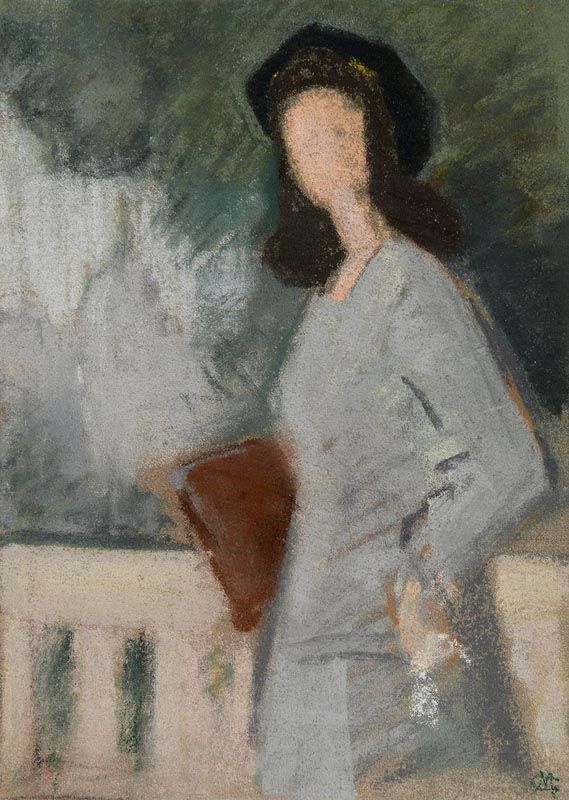

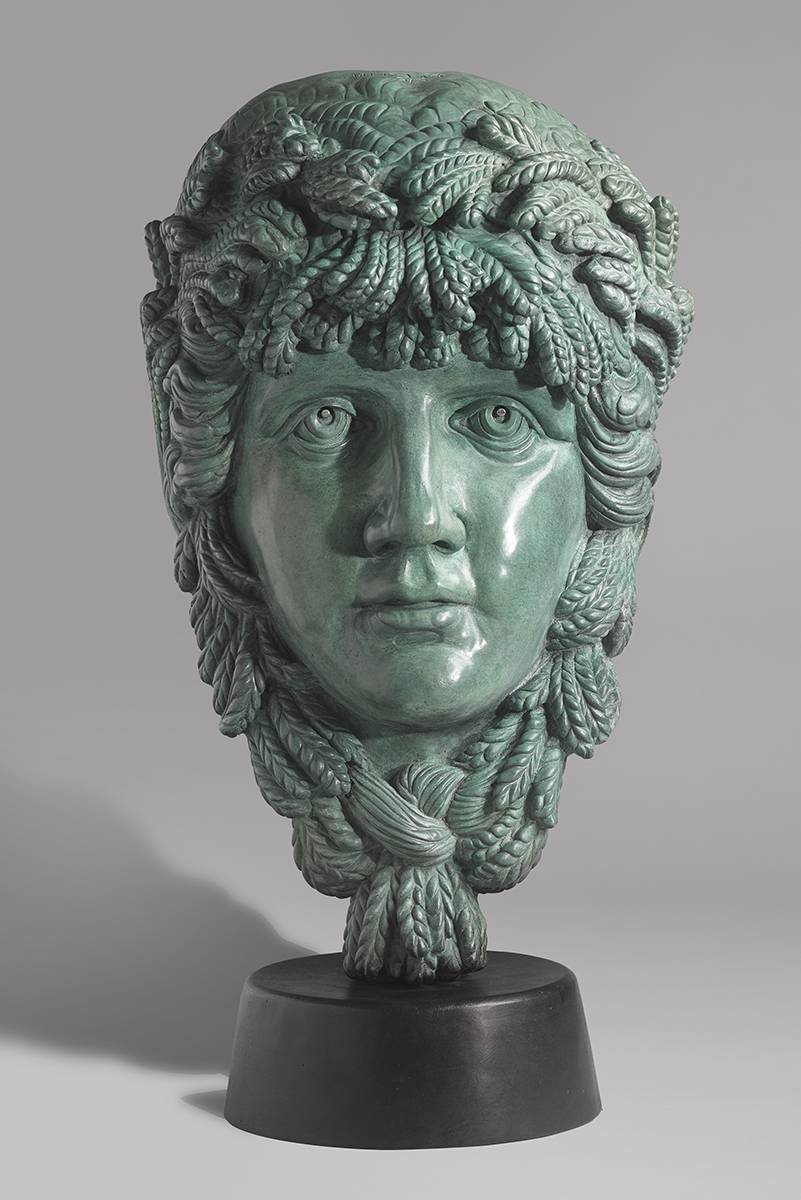
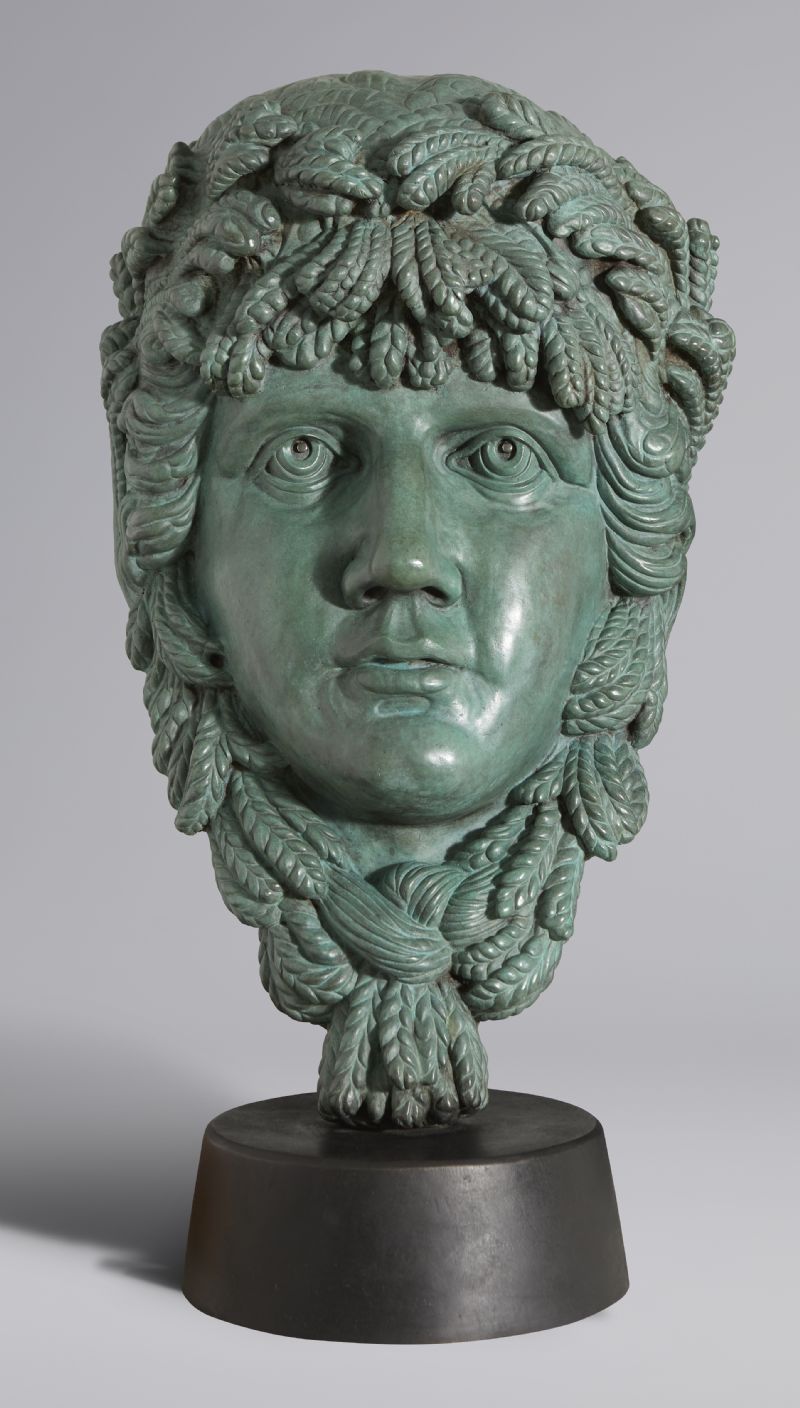
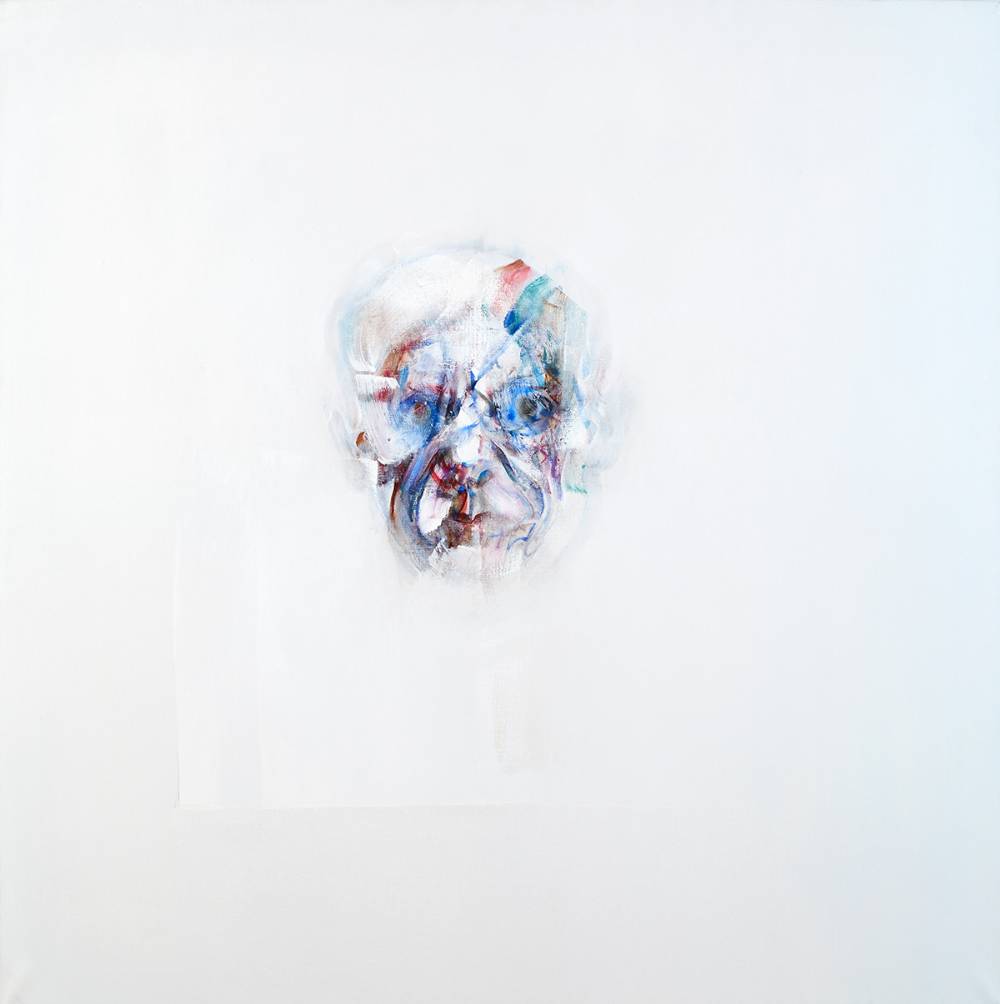
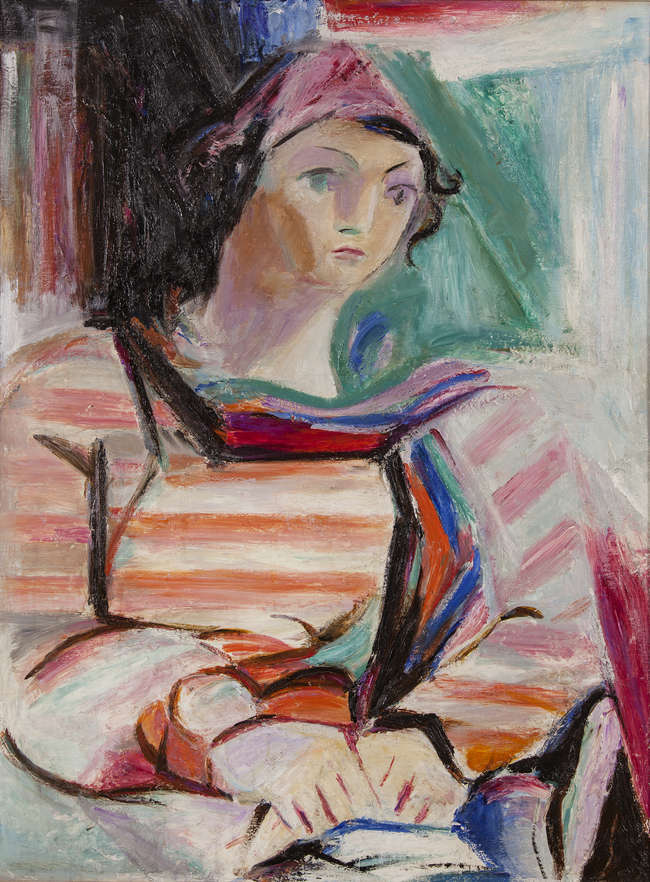
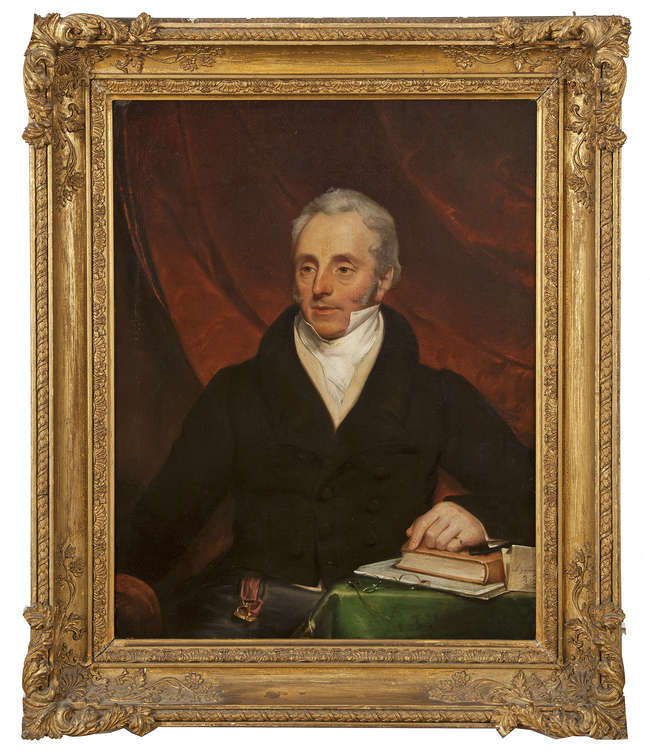
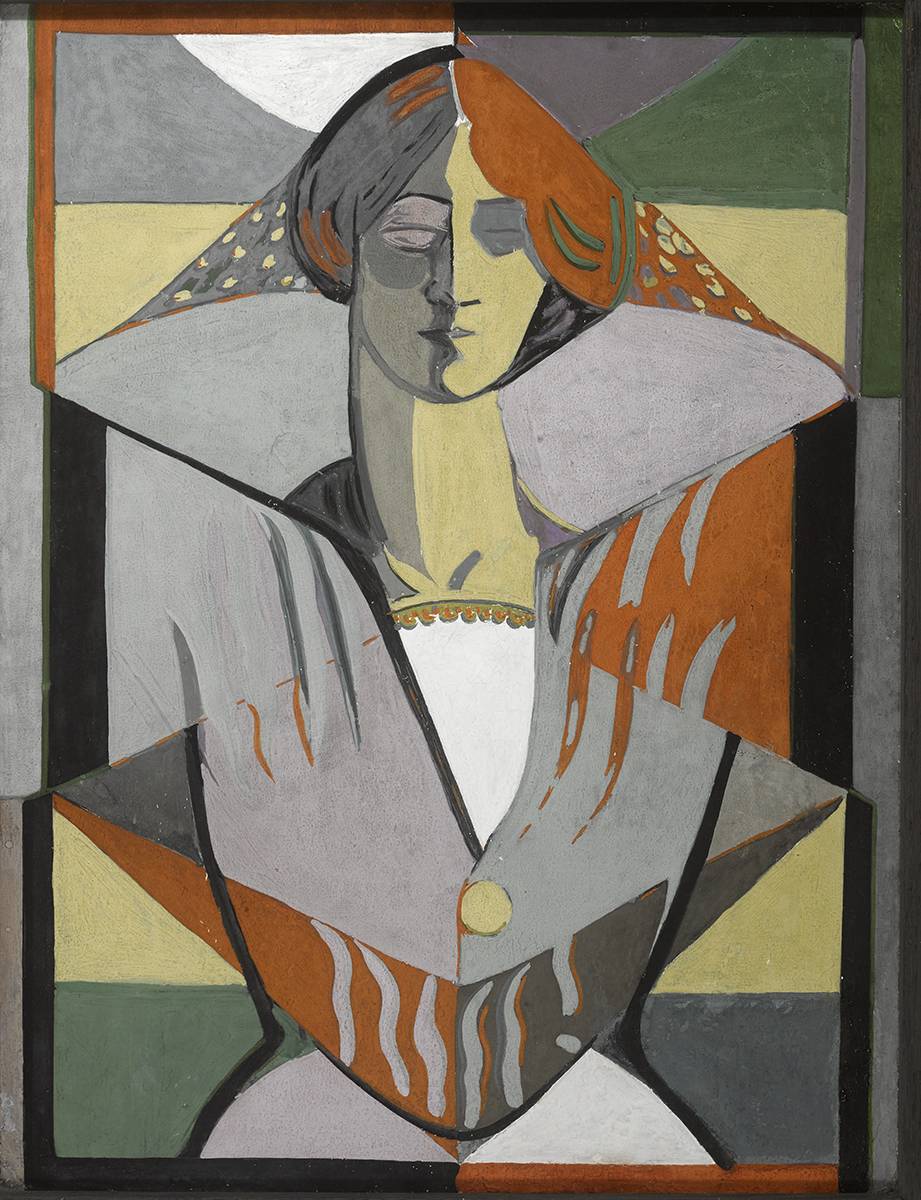
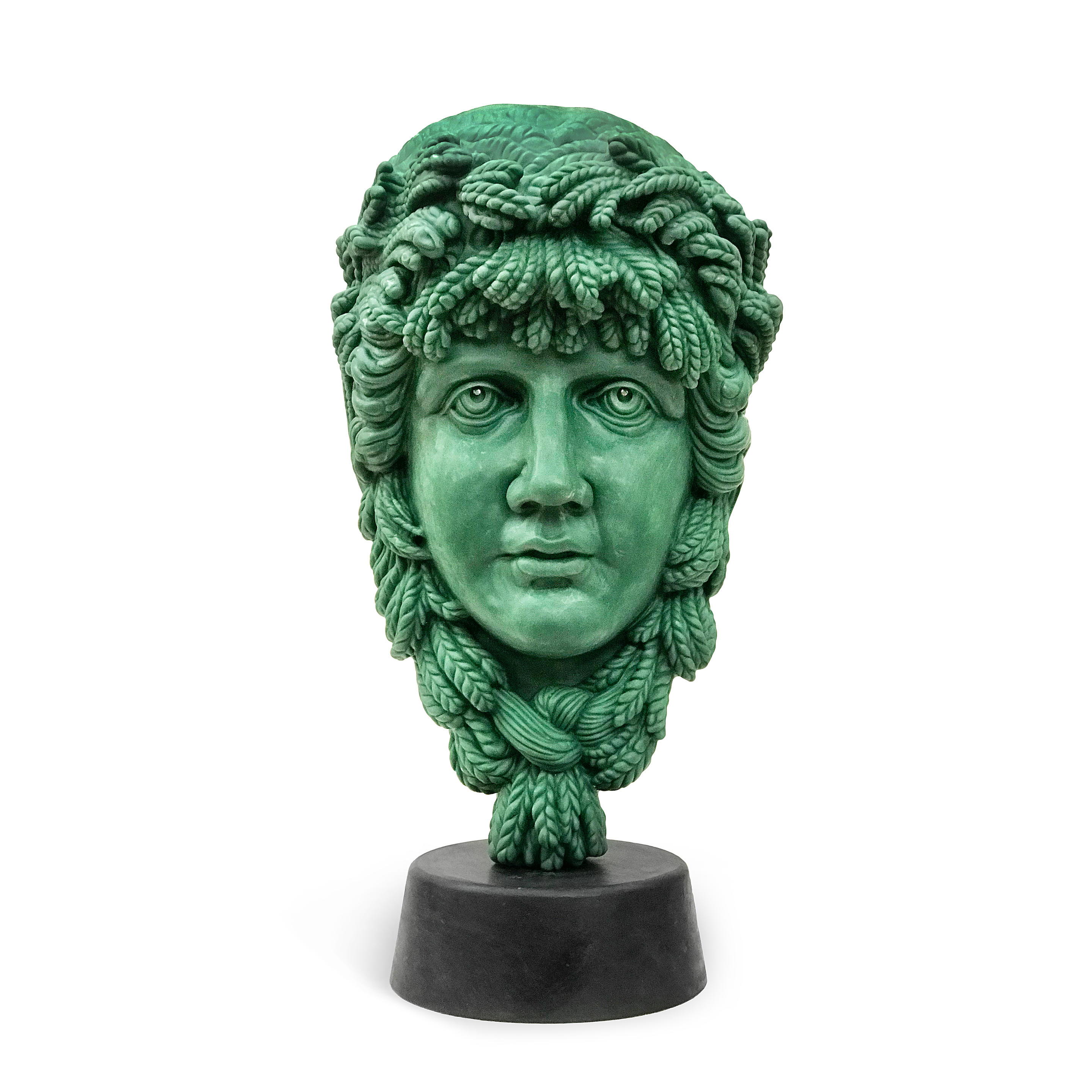
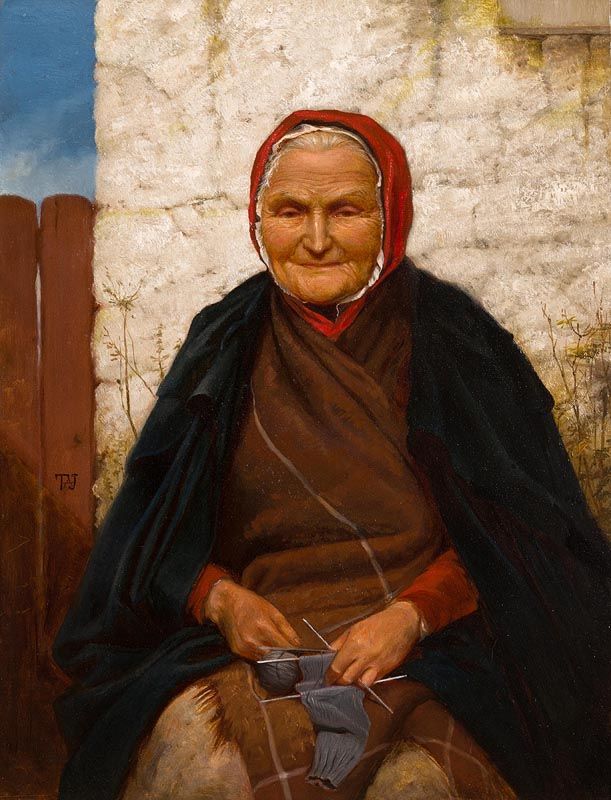

Testen Sie LotSearch und seine Premium-Features 7 Tage - ohne Kosten!
Lassen Sie sich automatisch über neue Objekte in kommenden Auktionen benachrichtigen.
Suchauftrag anlegen